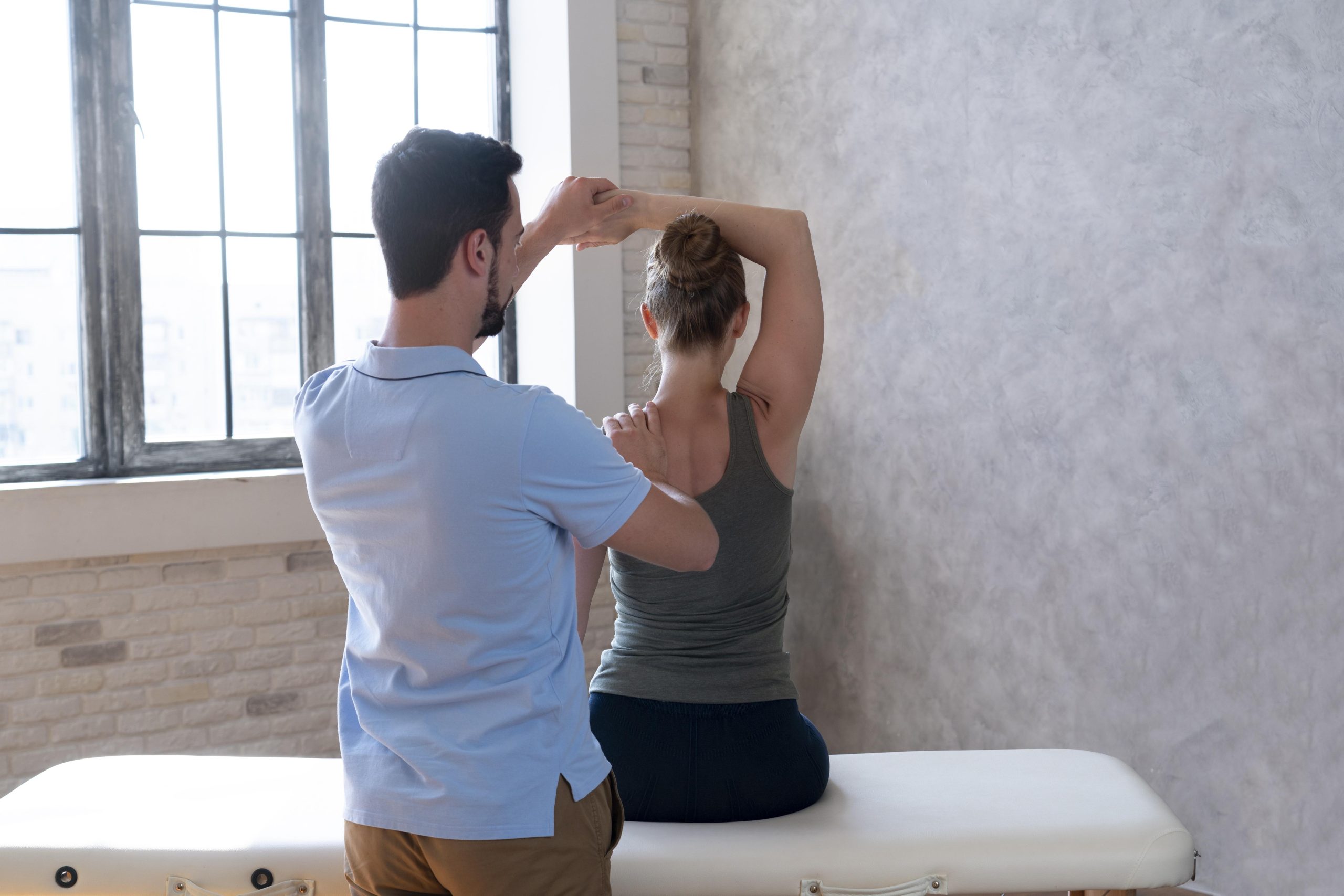Good posture is crucial for maintaining spinal health and preventing back pain. Poor posture can lead to a variety of musculoskeletal issues, including chronic back pain, neck pain, and headaches. At Spinal Recovery Center in Warren, Michigan, we emphasize the importance of proper posture in our comprehensive approach to spine and overall health. In this article, we will explore how to improve your posture to prevent back pain and enhance your well-being.
Understanding Posture
Posture refers to the position in which you hold your body while standing, sitting, or lying down. Proper posture maintains the natural curves of the spine and distributes body weight evenly, reducing strain on muscles and ligaments.
Characteristics of good posture:
- Balanced Head Position: Your head should be aligned with your spine, not jutting forward.
- Shoulders Back and Relaxed: Shoulders should be back and down, not rounded forward.
- Engaged Core: Engaging your abdominal muscles supports your lower back.
- Neutral Spine: Maintaining the natural curve of the spine without excessive arching or rounding.
- Weight Distribution: Evenly distributing weight on both feet while standing and on both hips while sitting.
Tips to Improve Posture
- Mindful Sitting
Prolonged sitting, especially in a slouched position, can lead to back pain. Practicing mindful sitting habits can make a significant difference.
How to sit properly:
- Use a Supportive Chair: Choose a chair that supports the natural curve of your spine.
- Feet Flat on the Floor: Keep your feet flat on the floor or on a footrest.
- Knees at Hip Level: Ensure your knees are at the same level or slightly lower than your hips.
- Use a Lumbar Roll: Place a small pillow or rolled-up towel behind your lower back for extra support.
- Ergonomic Workstation
An ergonomic workstation setup can prevent strain and promote good posture while working.
Ergonomic tips:
- Monitor at Eye Level: Position your computer monitor at eye level to avoid neck strain.
- Keyboard and Mouse Placement: Keep your keyboard and mouse at a comfortable height to prevent shoulder and wrist strain.
- Adjustable Chair: Use an adjustable chair that allows you to maintain proper posture.
- Standing Posture
Standing correctly can reduce the risk of back pain and improve overall posture.
How to stand properly:
- Even Weight Distribution: Distribute your weight evenly on both feet.
- Avoid Locking Knees: Keep your knees slightly bent to avoid locking them.
- Engage Core Muscles: Engage your abdominal muscles to support your spine.
- Keep Shoulders Back: Pull your shoulders back and down, avoiding a hunched position.
- Walking Posture
Walking with proper posture can reduce strain on your back and improve your overall posture.
How to walk properly:
- Head Up: Keep your head up and eyes forward.
- Engage Core Muscles: Engage your core to support your spine.
- Swing Arms Naturally: Let your arms swing naturally at your sides.
- Sleeping Posture
Your sleeping posture can significantly impact your spinal health and back pain levels.
How to sleep properly:
- Supportive Mattress: Use a mattress that provides adequate support for your spine.
- Side Sleeping: Sleeping on your side with a pillow between your knees can help maintain spinal alignment.
- Back Sleeping: If you sleep on your back, place a pillow under your knees to support the natural curve of your lower back.
- Core Strengthening Exercises
A strong core supports your spine and promotes good posture.
Effective core exercises:
- Planks: Hold a plank position to strengthen your abdominal muscles.
- Bridges: Lift your hips while lying on your back to strengthen your lower back and glutes.
- Bird Dogs: Extend opposite arm and leg while on all fours to improve stability and core strength.
- Stretching Exercises
Regular stretching can improve flexibility and reduce muscle tension, promoting better posture.
Effective stretches:
- Chest Stretch: Stretch your chest muscles to counteract the effects of slouching.
- Hip Flexor Stretch: Stretch your hip flexors to prevent tightness that can lead to poor posture.
- Upper Back Stretch: Stretch your upper back to relieve tension and promote alignment.
- Mindfulness and Awareness
Being mindful of your posture throughout the day can help you make conscious adjustments and maintain proper alignment.
Mindfulness tips:
- Frequent Check-Ins: Regularly check your posture and make adjustments as needed.
- Use Reminders: Set reminders on your phone or computer to check and correct your posture.
- Practice Deep Breathing: Deep breathing can help you relax and maintain a neutral spine.
Benefits of Good Posture
Improving your posture can have numerous benefits for your overall health and well-being, including:
- Reduced Back Pain: Proper posture minimizes strain on the spine and muscles, reducing pain.
- Enhanced Breathing: Good posture allows for better lung expansion and improved breathing.
- Increased Energy: Proper alignment reduces fatigue and improves energy levels.
- Better Digestion: Good posture promotes proper digestion by reducing pressure on abdominal organs.
- Improved Confidence: Standing and sitting tall can boost your confidence and mood.
Why Choose Spinal Recovery Center?
At Spinal Recovery Center in Warren, Michigan, we specialize in helping patients achieve and maintain proper posture to prevent back pain and improve overall health. Our experienced team of chiropractors and physical therapists provides personalized care and effective treatments to address posture-related issues. Whether you need spinal adjustments, physical therapy, or ergonomic advice, we are here to support you on your journey to better posture and health.
For more information or to schedule a consultation, visit our website or call us directly. Let us help you achieve optimal posture and prevent back pain for a healthier, more active life.


